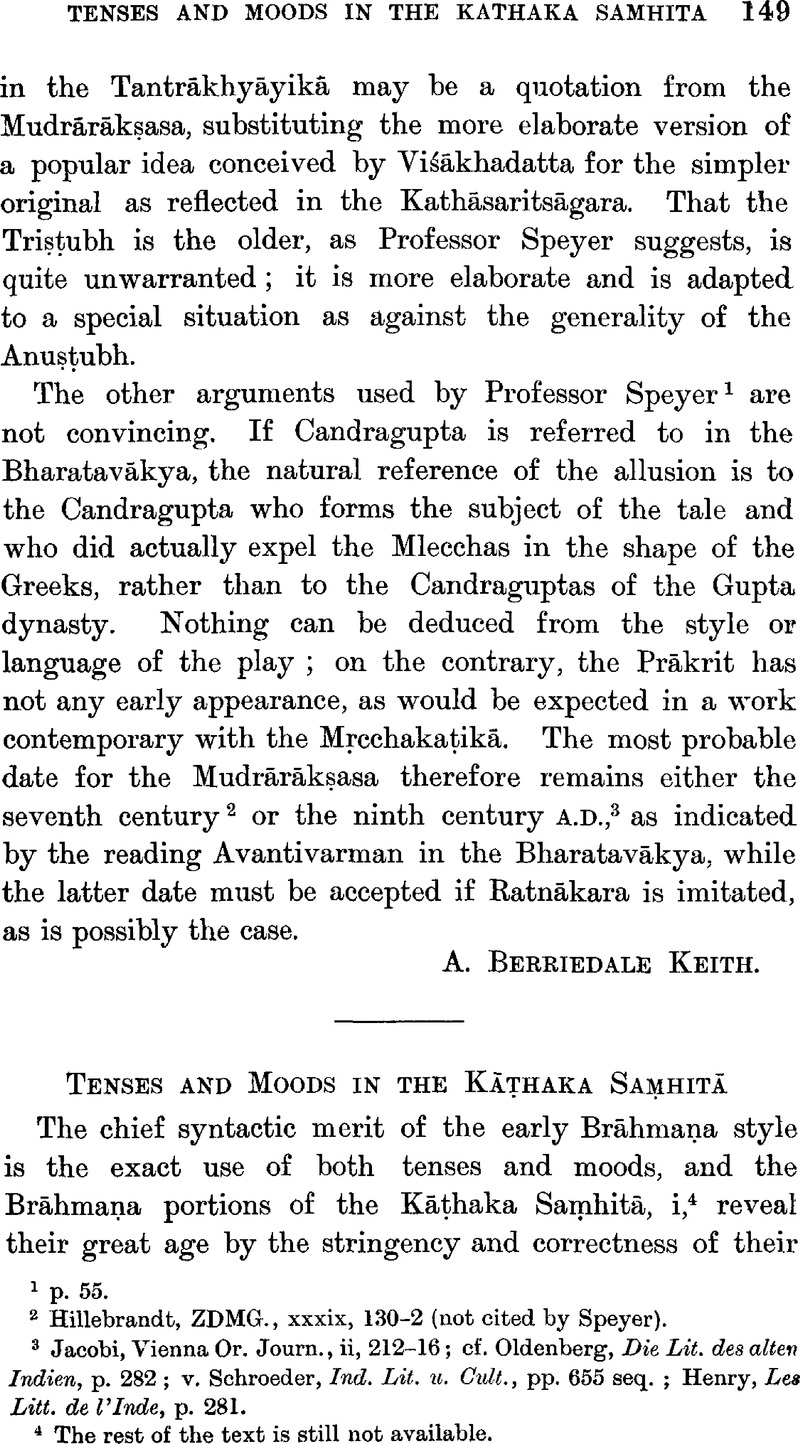No CrossRef data available.
Published online by Cambridge University Press: 15 March 2011

page 149 note 4 The rest of the text is still not available.
page 150 note 1 These numbers make no claim to absolute accuracy, but it is hoped that they are close enough to truth for all practical purposes. They refer to the non-Mantra material alone.
page 150 note 2 Whitney, , Trans. Am. Phil. Ass., 1892, pp. 5–34;Google Scholar my Aitareya Āraṇyaka, p. 172.Google Scholar
page 150 note 3 Delbrück, , Vergl. Synt., ii, 186;Google ScholarMonro, , Homeric Grammar 2, pp. 31Google Scholar seq.
page 150 note 1 The present sense is very clearly seen in Aitareya Āraṇyaka, ii, 1, 3.Google Scholar
page 151 note 1 The parallel passages, Taittirīya Saṃhitā, i, 5, 8;Google ScholarMaitrāyaṇī Saṃhitā, i, 5, 11,Google Scholar have not this phrase.
page 151 note 2 See Delbrück, , Synt. Forsch., v, 280Google Scholar seq.; Caland, , Ueber das rituelle Sūtra des Baudhāyana, p. 48.Google Scholar
page 151 note 3 For the form cf. Bṛhaddevatā, vii, 75.Google Scholar
page 151 note 4 Delbrück, , op. cit., p. 286.Google Scholar
page 152 note 1 In some of these cases Speyer, , Vedische und Sanskrit Syntax, pp. 88, 89,Google Scholar sees attraction. But there is no reason to deny the true conditional force in any example which he cites. As will be seen below, the protasis may also contain a “generic” optative.
page 152 note 2 I treat together the optative in ordinary relative and comparative clauses, as the mood is governed by the same principles in both; cf. Monro, , Homeric Grammar 2, p. 258.Google Scholar See also Delbrück, , op. cit., v, 339, 348, 350,Google Scholar etc.; my Aitareya Āraṇyaka, pp. 242, 247.Google Scholar
page 153 note 1 Gildersleeve, (A.J.P., xxiii, 129;Google Scholar xxiv, 361; cf. his Latin Grammar 3, p. 364)Google Scholar comments on the construction, but not very intelligibly.
page 153 note 2 Goodwin, , Greek Moods and Tenses, pp. 376Google Scholar seq.; Monro, , op. cit., pp. 289 seq.Google Scholar
page 153 note 3 Böhtlingk, , ZDMG., xli, 186, 187.Google Scholar For Rāmāyaṇa, i, 2, 28.Google Scholar 29, there cited, cf. Kauṣītaki Upaniṣad, iii, 1, and similar passages; Allen, and Greenough, , Latin Grammar, pp. 346Google Scholar seq. The use of the optative in relative clauses in definitions becomes normal in Epic style, e.g. Mbh., viii, 69, 57.Google Scholar
page 154 note 1 Nor, indeed, is it any reasonable Sanskrit (except, as in agachat in xi, 2, cited above, in the sense “let him give the rope which he actually once reached”). Classical Sanskrit (see Pāṇini, iii, 3, 135) requires the use of the aorist to denote frequent or customary action.Google Scholar
page 154 note 2 Cf. Michelson, , JAOS., xxv, 134Google Scholar seq. (for p. 136, Hopkins, , JAOS., xx, 223,Google Scholar should be compared).